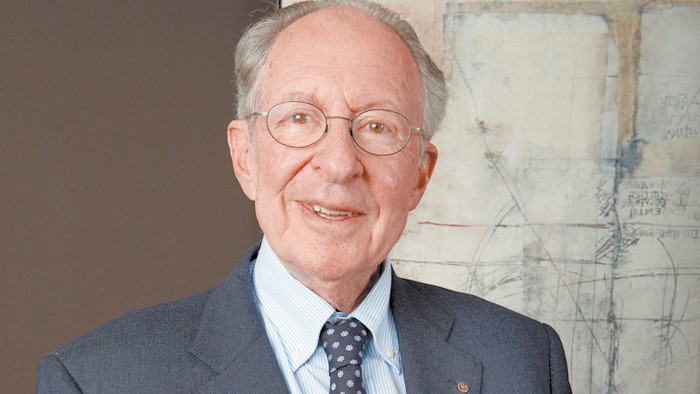Watch industry mourns Raymond Weil who defied quartz crisis to go solo

Roula Khalaf, Editor of the FT, selects her favourite stories in this weekly newsletter.
Even those with nothing more than a passing interest in luxury horology will probably have heard of Raymond Weil, if for no other reason than the fact that watches bearing his name are found throughout the world.
Mr Weil, who died in Geneva on January 26 at the age of 87, became one of the most successful and highly regarded figures in the business, after setting up his watch brand during the height of the “quartz crisis” in 1976.
By then, he had worked in the industry for 27 years, having started his career in 1949 with the Camy watch company where he worked his way up to the rank of managing director.
Ironically, Mr Weil said it was the threat faced by the Swiss watch industry from inexpensive, quartz-powered imports that spurred him to establish his own dial name.
He felt frustrated by Camy’s refusal to adapt to the situation and market its products as high-end, artisan creations which were intended for a far more sophisticated buyer than the mass-produced offerings of its new competitors.
Mr Weil’s aim was to prove that it was possible to make luxury watches at affordable prices, and he displayed his first creations at the Basel watch show in 1977, presenting them to retailers on a folding card table from a 16m sq stall.
It was a humble beginning but, by working hard and travelling far and wide to spread the word, he managed to sell 5,000 pieces in the first year. That figure rose to 40,000 in 1978, to 50,000 in 1980 and 70,000 by 1982.
A life-long music lover – his daughter, Diana, is a virtuoso pianist – Mr Weil decided from day one to develop the brand’s DNA around the theme of classical opera.
The Raymond Weil watch range still includes families named after Richard Wagner’s Parsifal and Giuseppe Verdi’s Nabucco among others.
The brand is an official partner of the Nordoff Robbins music therapy charity, the Brit Awards and the Albert Hall.
Olivier Bernheim, Mr Weil’s son-in-law, joined the company in 1982 and took over as chief executive in 1996 – but Mr Weil remained a director for more than 15 years, only stepping down from the board last September.
Indeed, until a few years ago he is said to have still been travelling to the firm’s Geneva headquarters by motor scooter, his favoured method of negotiating the city.
“He was a quite extraordinary man who recognised the importance in business of forming good relationships,” says Mr Weil’s grandson, 33-year-old Elie Bernheim, the firm’s director of marketing.
“When he launched the company, he personally travelled around the world to establish the brand. His first retail outlet was in New York as a result of a contact he established at the Basel fair.
“But he was also a pioneer in that he took the brand to India and China during the early 1980s, and part of our present day success is down to the fact that his foresight meant we became established in such countries a long time before many of our competitors.”
Away from horology, Mr Weil was a connoisseur of 20th-century artists such as Mark Rothko and Wassily Kandinsky and built up an impressive collection of works. He also had a great love of flying.
“His second passion after watch making was probably aviation,” says Elie Bernheim.
“When he launched the company, he was 50 and it left him with so little spare time that he didn’t get around to qualifying for his pilot’s licence until he was almost 60.
“He subsequently bought his own Dakota aircraft and even taught my brother, Pierre [sales director], how to fly.”
Mr Weil’s company remains one of the few high-profile, privately owned Swiss watch brands to survive as a family business.
Its founder has left it in rude health with 3,500 points of sale around the world, 15 monobrand boutiques and an annual production of 200,000 watches with an average retail price of about £1,300.
——————————————-
Raymond Weil: At a glance
● Joins Camy watches in Geneva in 1949 and rises to the post of managing director.
● Leaves in 1976 to establish his own brand at the age of 50.
● Sells 5,000 watches in the first year of trading.
● Pioneers sales in China and India during the early 1980s.
● Develops Raymond Weil into an international brand.
● Steps down in 1995 from longstanding role as president of the Exhibitors’ Committee of the Basel watch fair.
● Steps down as chief executive in 1996, giving control to his son-in-law.
● Retires from the board in September 2013, leaving the company with 3,500 points of sale around the world
Comments